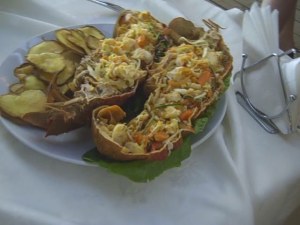My interview with Boyd Matson, National Geographic Radio, XM Radio, NPR will be aired the first two weekends in February, depending upon your location. The Easter Island Program will also be streamed on the National Geographic Website:
and by Feb. 20th, the program will be available on itunes.
The question I’m asked the most is:
In the middle of nowhere, no really, it’s roughly equal distance from Tahiti and Peru and Chile, at 29′ South latitude. That means 2,400 miles from land, in the southern and eastern most area of what’s considered Polynesia.
It’s a long way!
How do you get there?
My trip took 12 hours; an hour to Los Angeles, then 8 hours from LAX to Lima, Peru on LAN.
American, Alaska, Qantas, JAL, Cathy Pacific, British Airways and LAN are all part of the OneWorld Alliance, so pool your miles and upgrade to Business for a lie-down bed and great meals and wine.
Then I had a good night’s sleep in lovely hotel, Libertador (a well known, upscale brand in Peru), and then a full day tour of Lima.
What to do during a lay-over in Lima?
Again, friends asked me if Lima is safe for tourists. That depends upon where you go and how savvy you are. I recommend you hire a guide for the day. Mountain Lodges of Peru has day guides, and Roberto, our charming, well-educated guide was excellent. He showed us all the highlights — Plaza San Martin, San Isidro, Miraflores, Museo Larco — and he saved us time, and ensured our safety. (By the way, Mountain Lodges of Peru’s website is awesome. You’ll want to spend more time in Peru after perusing the site).
Thanks to LAN Airlines for sponsoring my visit.







